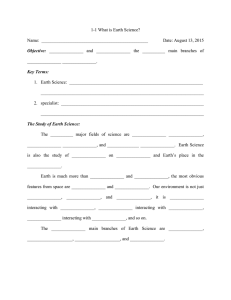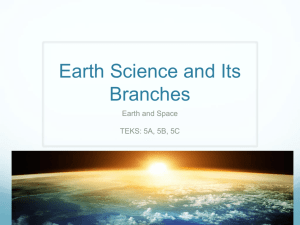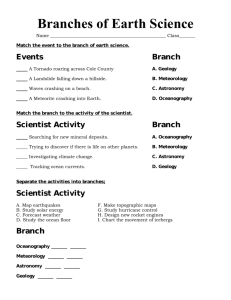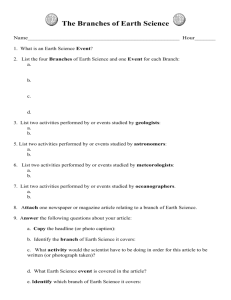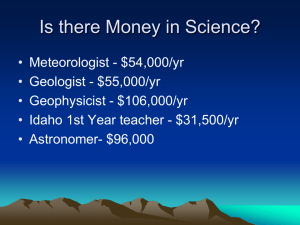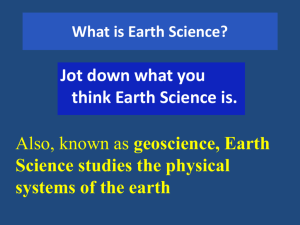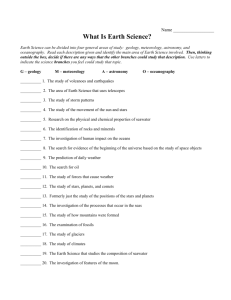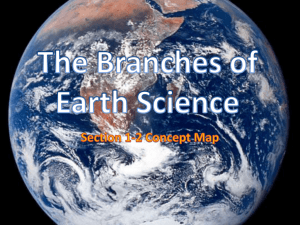Earth Science - Kim Willoughby
advertisement
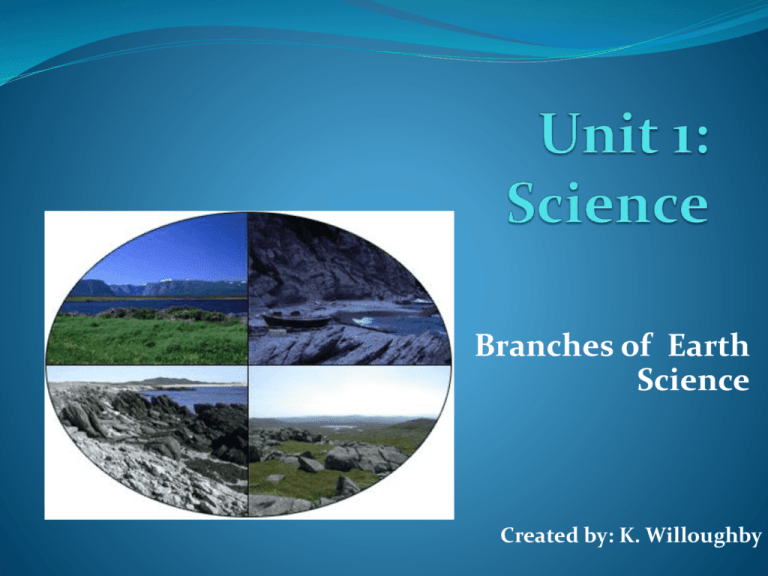
Branches of Earth Science Created by: K. Willoughby Earth Science can be divided into four major branches: Geology Oceanography Meteorology Astronomy Geology is the study of the origin, history, and structure of the Earth and the processes that shape the Earth. Most geologists specialize in a particular aspect of the Earth. A volcanologist is a geologist who studies volcanoes. Make careful observations to answer questions. Geology––Science that Rocks • A seismologist is a geologist that studies earthquakes. •A paleontologist is a geologist who studies fossils. Oceanography is the Oceanography ––Water, Water Everywhere scientific study of the sea. Physical oceanographers are geologists who study the physical features of the ocean. Biological oceanographers are geologists who study the plants and animals that live in the ocean. Geological oceanographers are geologists who study and explore the ocean floor. Chemical oceanographers are geologist who study the amounts and the distributions of natural and human-made chemicals in the ocean. Exploring the Ocean Floor Oceanographers use miniature research submarines to travel far below the surface of the oceans. Meteorology––It’s a Gas! Meteorology is the scientific study of the Earth’s atmosphere, especially in relation to weather and climate. Hurricanes - Today, meteorologists warn people about hurricanes, so these storms now kill fewer people than they did in the past. • Tornadoes - About 780 tornadoes touch down in the United States each year. Some meteorologists chase tornadoes so they can better understand how tornadoes form and how they behave. Astronomy––Far, Far Away! • Astronomy is the study of the universe. • Astronomers use optical telescopes to let astronomers see distant objects. Radio telescopes use radio waves to study objects that are too far away to be seen or that do not give off light. Star Struck! Astronomers spend much of their time studying stars. Astronomers estimate that there are over 100 billion stars in the universe. The star that has been studied the most is the one that is closest to Earth––the sun! Special Branches of Earth Science In addition to the main branches of Earth science, there are branches that rely heavily on other areas of science. The study of how humans interact with the environment is called environmental science. These scientists use geology, life science, chemistry, and physics. Ecology The study of communities of organisms and their nonliving environment is called ecology. Ecologists work in fields such as wildlife management, agriculture, forestry, and conservation. •The study of the chemistry of rocks, minerals, and soil is called geochemistry. Geochemists judge the economic value of materials from the earth, determine what the environment was like when rocks formed, and study the distribution of chemicals. Geography and Cartography • People who make maps of the surface features of the Earth are called cartographers. Cities are often located by geographic features, such as rivers, that are used for transportation.

